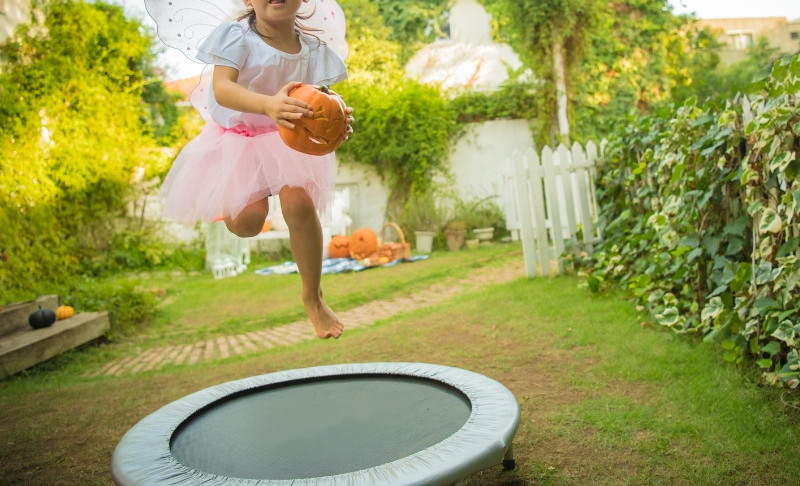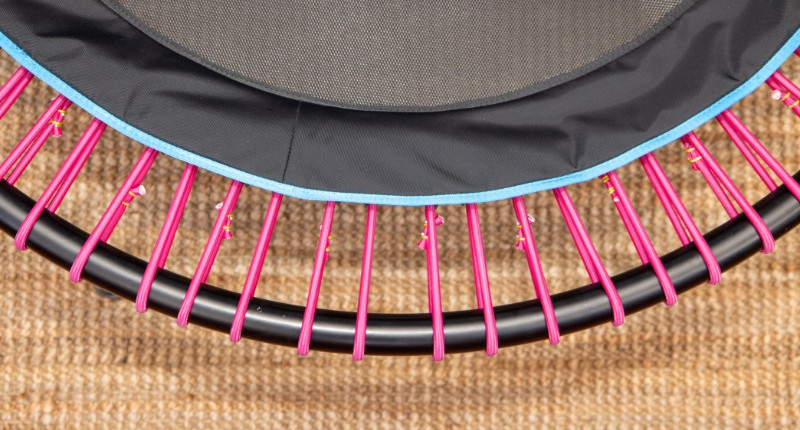Are mini trampolines safe for young children? As a parent, it’s important to consider age appropriateness when introducing new activities. Explore the world of mini trampolines and uncover mini trampoline safety guidelines for kids. From sturdy construction to proper supervision, ensure your child’s trampolining experience is both enjoyable and secure.
Age is an important consideration if your child wants to use the mini trampoline. Compared to larger trampolines, mini trampolines are generally considered safer for young children. It is, however, still important to consider the child’s age and developmental stage.
Mini Trampoline Safety Guidelines and Age
Children’s age is a significant factor when it comes to the mini trampoline. As a general guideline, it is recommended that children under the age of six should not use the mini trampoline.
Young children’s skeletal systems are just developing, and the impact of jumping on a trampoline can pose risks to their still maturing bones. At this age, it is important to focus on other forms of active play and gross motor skill development.
Balancing Fun and Safety on the Mini Trampoline
By the age of six, many children have better-developed coordination, balance, and muscle control, which can contribute to safer trampoline use. However, it is important to note that each child develops at their own pace, and using a mini trampoline should be considered on an individual basis.
Physical development and maturity are equally important when determining the appropriate age for mini trampoline use. Children should be sufficiently mature to follow instructions. They should be able to land and bounce with control, to minimize the risk of falls.
Talk with a Professional
While age serves as a general guideline, it should not be the sole determining factor. Consult with healthcare professionals, such as pediatricians or physical therapists. They can evaluate the child’s individual development, muscle strength, coordination, and bone density to provide personalized advice on when it is safe to introduce a mini trampoline.
Manufacturer Recommendations
Always follow the guidelines provided by the mini trampoline manufacturer. They may have specific age recommendations based on the design and features of their product.
Safety Matters: Supervision Required
Moreover, regardless of age, adult supervision is essential during mini trampoline use. The presence of a responsible adult can help ensure safety, monitor the child’s movements, and provide immediate assistance if needed.
Age considerations are crucial when deciding if a child is ready for mini trampoline use. While the general guideline suggests avoiding trampolines for children under six, individual factors such as physical development and maturity should also be considered. Consulting with healthcare professionals and maintaining constant adult supervision are key to ensuring the safety and well-being of children using mini trampolines.
Special Needs Children
According to the Centers for Disease Control and Prevention (CDC), “Autism spectrum disorder (ASD) is a developmental disability caused by differences in the brain. People with ASD often have problems with social communication and interaction, and restricted or repetitive behaviours or interests.”
The use of mini trampolines can be beneficial for children with special needs, including those on the autism spectrum. While each child is unique and may have different preferences and sensitivities, mini trampolines can provide various advantages for sensory integration, motor skills development, and overall well-being.
Rhythm and Repetition
For children with autism, the repetitive and rhythmic bouncing motion of a mini trampoline can help regulate sensory input. It can provide a calming and organizing effect on their sensory system, promoting self-regulation, and reducing anxiety or sensory overload. The sense of movement received through bouncing can contribute to body awareness and coordination.
Mini trampolines can offer opportunities for physical exercise and gross motor skill development in a controlled environment. Engaging in jumping activities on a mini trampoline can help improve balance, coordination, and muscle strength. It provides a fun and motivating way for children with special needs to work on their motor skills and enhance their overall physical fitness.
Social Benefits of the Mini Trampoline
In addition, the use of a mini trampoline can encourage social interaction and turn-taking skills. It can be used as a tool during therapeutic sessions or structured playtime, providing opportunities for joint attention, imitation, and social engagement. Encouraging peers or siblings to join in trampoline activities can promote social interaction and cooperation.
A New Experience
It is important to go at the child’s pace when first introducing a mini trampoline to those with special needs.
Some children may require gradual exposure and desensitization to the bouncing sensation. It is essential to respect their comfort level and provide appropriate support and supervision during trampoline use.
Mini trampolines can be a valuable tool for children with special needs, including those with autism. It offers sensory regulation, motor skill development, and social interaction opportunities.
However, a customized approach and professional guidance are essential to ensure the safe and effective use of mini trampolines for children with special needs, to promote their overall development and well-being.
Consult with Your Healthcare Provider
Consulting with healthcare professionals, therapists, or special education experts can guide you in choosing the best way to incorporate mini trampolines into therapy or home routines for children with special needs. They can provide insights into specific goals, modifications, and safety considerations based on the child’s unique needs and abilities.
Safety First: Trampolines and Children
Safety is important when using mini trampolines to reduce the risk of any injury. Here are some key safety concerns associated with mini trampolines.
Impact-Related Injuries
Mini trampolines, like their larger counterparts, can pose a risk of impact-related injuries such as sprains, strains, and fractures.
Improper landings or collisions with the trampoline’s frame or springs can lead to these types of injuries. It is crucial to teach proper jumping and landing techniques to reduce the risk of such injuries.
Space and Surroundings
Clear the space surrounding the mini trampoline. Remove any hazards or obstacles in the area, and stay clear of walls, furniture, or other hard surfaces.
Falling Off the Trampoline
Particularly for younger or inexperienced users, appropriate safety measures, such as handlebars and padding around the frame reduce the risk of falling off and sustaining injuries. Mini trampolines are not meant for gymnastic tricks.
Proper supervision and the use of safety features can help prevent accidents related to falling off the trampoline.
Choose Quality Equipment
To ensure worry-free rebounding, pay close attention to several key factors. Choose a reputable brand that offers sturdy construction.
Sturdy equipment reduces the risk of accidents. Handlebars provide extra support especially for younger users. Also, regular inspection and maintenance is important. Tighten loose parts. Occasionally weak springs or bungees may need to be replaced.
Overexertion and Fatigue
Engaging in extensive or intense bouncing sessions on a mini trampoline can lead to overexertion and fatigue.
It is important to set time limits for trampoline usage and ensure users take regular breaks to prevent exhaustion and reduce the risk of accidents due to reduced coordination and muscle control, especially for young children.
Healthcare professionals can suggest necessary modifications or precautions that should be considered for those with pre-existing health conditions.
Kid’s 3 Minute Workout Routine
Mini Trampoline Safety Guidelines for Kids
To keep kids safe and having fun, here are several preventative measures to put in place.
- Provide proper instruction and guidance on safe trampoline usage techniques, including proper landings and controlled bouncing.
- Ensure the trampoline is in good condition, with no broken springs or damaged parts, and conducting regular maintenance checks.
- Implement safety measures such as handlebars or padding around the trampoline frame to prevent falls and minimize impact-related injuries. Allow plenty of space around the mini trampoline.
- Set usage time limits and ensuring users take breaks to prevent overexertion and fatigue.
- Supervise trampoline usage, particularly for younger children, to ensure they follow safety guidelines and practices. Mini trampolines are not meant for gymnastic tricks.
By being aware of these potential risks and implementing appropriate safety measures, the risks associated with mini trampolines can be significantly minimized, allowing for a safer and enjoyable experience for users.
Disclaimer:
If you have any concerns or questions about your health, you should always consult with a physician or other healthcare professional. No content on this site should be substituted for direct medical advice from your doctor or other qualified healthcare practitioners. The information contained here is for informational purposes only. It is from my research and personal experience.
Related Posts
What Should You Look for When Buying a Rebounder?
Beginner Mini Trampoline Workout Benefits
Trampoline History Facts and Benefits
The Best Rebounder Mini Trampoline with Handlebars



